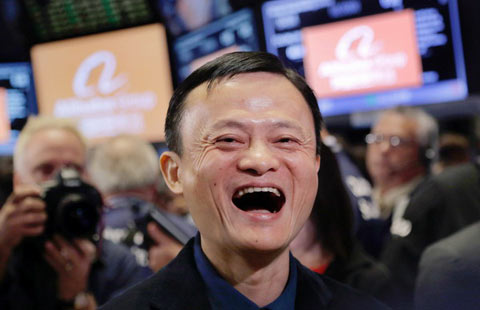Greenhouse gases predicted to peak earlier than pledged
(Agencies) Updated: 2015-06-09 11:28China's output of greenhouse gases is set to start falling five years earlier than the largest emitter has pledged, according to a study by UK academics that indicates an increased chance of global warming staying at safe levels.
The forecast of a peak in 2025 in a paper published on Monday by former World Bank chief economist Nicholas Stern suggests China is acting faster than promised to shift to clean energy from fossil fuels. President Xi Jinping last year pledged that his country's emissions would peak by 2030.
"China's international commitment to peak carbon dioxide emissions around 2030 should be seen as a conservative upper limit from a government that prefers to under-promise and over-deliver," Stern, now a professor at the London School of Economics, and his co-author, Fergus Green, wrote in the paper.
The nation's progress in reducing emissions is crucial to the success of global efforts to rein in climate change, because it spews about a quarter of all heat-trapping gases into the atmosphere. Envoys from more than 190 nations aim to broker the first global deal to cut carbon emissions that's binding for all countries at a United Nations meeting in Paris in December.
The goal for the new agreement will be to contain the rise in temperatures since the industrial revolution to at most 2 degrees Celsius. That is a target that even Christiana Figueres, the UN diplomat spearheading talks, has said may be beyond the capability of the Paris conference.
The China forecast "could hold open the possibility that global greenhouse gas emissions could be brought onto a pathway consistent with the international goal", Stern and Green wrote.
Chinese emissions are likely to rise to the equivalent of 12.5 billion to 14 billion tons of carbon dioxide before annual output begins to decline, according to the paper. The country spewed about 10.5 billion tons in 2011, the most recent data from the World Resources Institute indicates.
- Danger as indexes diverge from realities
- China's top legislator calls for closer BRICS cooperation
- China earmarks nearly 5b yuan for agricultural investments
- Booming prepaid consumption riddled with pitfalls
- China's May PPI down 4.6%
- China May inflation edges down to 1.2%
- Apple reveals plan to build all-platform eco-system empire
- 2015 Apple WWDC kicks off in San Francisco

















